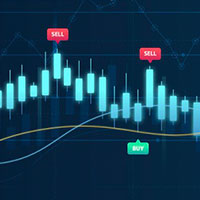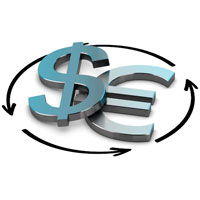Price gaps are a common phenomenon in forex trading, characterized by a significant difference between the closing and opening prices of an asset. These gaps can occur due to various factors, including changes in investor sentiment, market liquidity, and the release of important news. Understanding the types, causes, and implications of price gaps is crucial for traders looking to capitalize on these market opportunities and manage associated risks effectively.
What Is A Gap?
In the technical analysis, it can be identified only on the candlestick or bar chart, which fixes the size of the gap - the difference between the closing and opening prices. A gap in the flow of price quotes on the forex can be observed on the charts of various financial assets (currency pairs, stocks, commodities, etc.), during long breaks between trading sessions (mainly after the weekend).
Such tendency is connected with possible changes in investors' moods who sensitively react to any events able to influence changes in the supply/demand level for an asset. Significant new circumstances occur in the world arena according to their "schedule" and are not tied to the time of trading on the financial floors.
Significant intraday gaps are much rarer and can occur at the release of important news and in cases of serious economic, political, or natural disasters.
The Value Of Gaps
The gap, despite the high liquidity of this market, usually fluctuates in the range of 20-50 points (exceptions are force majeure when there were jumps of 100 points and more). These values should also be used as a guideline when developing a trading strategy, based on the use of gaps.
The following variants of gap values are considered:
- investors lose interest in working with the asset;
- the opposite situation - growth of activity and burst of the trading volume;
- sharp price jump at the news.
What Causes Gaps
The occurrence of gaps is not due to manipulation of brokers (if in doubt, you can double-check the quotes at other brokers, so as not to fall victim to a fake gap) and depends on several factors of a market nature (exceptions are faults of technical nature).
Low Liquidity Of The Asset
The level of liquidity of financial assets plays a key role in the occurrence of the gap. There is a direct correlation - the lower liquidity, the more often you can meet the price gaps. This correlation is confirmed by the difference in the frequency of gaps at stock exchanges and forex (the stock market cannot compete with forex in terms of trading volume). The over-the-counter forex market shows colossal growth rates (daily turnover approaches $6 trillion).
Investors' activity can be explained by the high demand for currencies (first of all, the US dollar) which serve all financial operations on the global market (here we have trading transactions, hedging risks, investments in securities, and other operations).
Fundamental Factors
Data of fundamental analytics also contributes to the appearance of gaps on the charts. Here we should pay attention to the publication of the main macroeconomic indicators of the leading countries in the world economy - the United States, Germany, China, and Japan. If the news release contains information that is significantly different from the preliminary forecasts, the probability of the price gap increases.
For example, Non-Farm Payrolls data (one of the most important U.S. statistics) coming out on the first Friday of the month can seriously change the mood of traders. During the coming weekend, they might radically revise their strategies, by the opening of trading on Monday the unbalanced forex market will react with a gap.
Technical Problems
Technical problems are caused by incomplete quotes coming to the trading terminal. Such situations can arise from the broker, and through the fault of the trader, are most often a consequence of interruptions in Internet connectivity. Technical gaps in the forex market are rare and may show insignificant gaps.
How To Identify A Gap
The gap on the candlestick or bar chart can be easily visualized as a gap between neighboring price quotes (there are no special tools to identify gaps). If the price minimum at closing is higher than the maximum at the opening, then a "bearish gap" is observed. If the price maximum at closing is lower than the minimum at the opening, we are talking about the gap upwards - the "bullish gap".
Types Of Gaps With Examples
Forex gaps are classified according to where they occur in the current market trend:
- Along the course of the trend;
- On the fading trends;
- On the breakouts of the flat.
Common Gap
This type of gap is a rare "guest" in forex because it appears on the low-liquid markets without pronounced dynamics. In currency trading, it can sometimes be noticed on Mondays in the morning session, if something provoked a sharp interest in the asset. As a rule, the gaps do not exceed 10 points and are not of interest for position opening. If one wants to check oneself on an "out of the box" situation, then one can play for closing the gap (usually, a common gap will close within 12 hours).
Breakaway Gap
Breakaway gaps occur in the final phases of the formation of some patterns (e.g., "symmetrical triangle", "head and shoulders"), breaking out key support/resistance levels, which together give a reliable signal of a powerful trend emergence. Beginning traders can use the program for the automatic search for patterns (autochartist).
Potential profit is achieved because such a gap is not closed, the price rushes in the direction of the breakout. At the bullish gap, it makes sense to place long positions, at the bearish gap - short ones.
Exhaustion Gap
The name tells about its characteristic features - it appears in the large fading trends, which can be explained by the loss of interest of traders in the trading asset. Due to such features, the emergence of a gap can be judged by the end of long-term trends and use two options for opening positions - either with a small profit target in the direction of the current trend or waiting for its completion and opening in the opposite direction.
With 100% certainty, it is impossible to judge a global reversal - a simple forex correction is not excluded.
Runaway Gap
Runaway gaps are distinguished by the fact that they occur when there is a significant increase or decrease in interest in a financial instrument. Upward runaway gaps tell us that demand has grown strongly, and downward runaway gaps tell us that supply has grown strongly. Runaway gaps arise when market players are late with their decision to buy or sell, and rush to buy or sell, following the saying "better late than never". Thus, at the halfway point of the current trend, a section is formed where the trading volume increases significantly, and a gap is formed in the direction of the trend. This gap is the runaway gap, as it describes traders running or catching up, who in a panic are trying to take advantage of the current trend.
Runaway gaps are also called measuring gaps because they often divide the current trend in half.
What Is A Gap Closure And Why It Happens
The behavior of the price after the gap formation on the forex market depends on its type and size, from the point of view of technical analysis, as well as fundamental data affecting the current market situation. Not always the price "fills" the formed gap, and if the gap is closed, the process can be prolonged for an indefinite period.
The main "engine" for closing gaps are market makers, who want to make a profit, knocking out Stops of Friday's pending orders of the "crowd" (the gap opening market activates a large number of buy/sell orders with Stop Losses, close to closing prices).
Do Gaps Always Close?
Statistics show that gaps are closed by at least 70% (on the weekly gap), but not all assets "reach" such values. The currency pairs EUR/JPY, GBP/EUR, and GBP/JPY compensate for price gaps best of all. The most reliable gap for closing trade is the exhaustion gap. When making a forecast for gap closure it is necessary to compare the technical "chart picture" with the fundamental background - if there is a "divergence", it is best to refrain from active operations, and the general forecast should be placed on the "shoulders" of other instruments.
How Dangerous Gaps Are For A Trader
Gaps are dangerous in the following cases:
- a trader is trading forex with a small deposit, which does not allow to insure a position when the price gap is significant and directed against the forecast;
- a Stop Loss is set short or non-existent when a trade remains open at the end of Friday trading.
Random price gaps, which sometimes appear in low time frames, can also be confusing. To avoid making unreasonable decisions based on such signals, it is necessary to "synchronize the watches" - to check for extraordinary events of fundamental character, and add a couple of technical indicators to the chart.
The traders who trade short-term (small profit goals) are subject to the risk of price gaps. For this category, even a small price gap can cause losses.
Mid-term and long-term strategists are not so worried about "tricks" of the gaps, because the potential profit of such traders is estimated in hundreds and thousands of points, and the "tough" gap does not exceed the "bar" of a few tens of points.
Gap Trading Tips
To trade gaps in forex, the following key factors are taken into account:
- Type of gap;
- Formed support/resistance levels;
- Type of financial asset.
You should pay special attention to the support and resistance levels. A breakout in either direction gives a strong trading signal.
Duplicate the truth of the signal will help:
- Candlestick patterns - "Hammer" and "Shooting Star";
- Pivot levels - breakdown of levels (S1, R1) in the direction of the trade forecast will confirm the continuation of the trend.
Using Price Gaps In Trading Practice
You can use market and pending orders for activation of positions on gaps. Different variants of events are taken into account - the probability of closure, its size, and the period of occurrence (time frame). Let's consider a trade in time frame M30. If at the opening of the forex market the price gap is fixed (it is taken into account from 20 points), then for the first half an hour the price will move along the gap, yielding to the force of inertia.
At a "bullish" gap you can open a market order to buy, determining the level of Take Profit with additional analysis tools. A "bearish" gap is similarly used, with a sell order being activated.
If the gap up or down appears contrary to the current trend, the probability of the gap closure increases. In such situations pending orders (Buy Stop on an uptrend and Sell Limit on a downtrend) are effective.
The main problem is the difficulty of setting a Stop Loss. With Take Profit, you can vary - put it at Friday's closing level, a little bit higher, or at Friday's local peaks (max/min).
Conclusion
Price gaps in forex trading provide valuable insights into market dynamics and can offer profitable trading opportunities. Traders can analyze the type of gap, consider support and resistance levels, and utilize additional technical indicators and candlestick patterns to make informed trading decisions. While gaps are not always guaranteed to close, traders can enhance their strategies by aligning technical analysis with fundamental factors. It is important for traders to exercise caution, especially when trading with smaller deposits and during times of heightened market volatility, to mitigate the risks associated with price gaps.

















